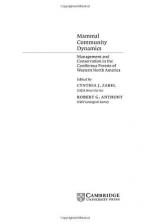|
This section contains 757 words (approx. 3 pages at 300 words per page) |

|
The geography of coniferous forests includes landforms, elevation, soil, mineral resources, and water resources.
Landforms
Coniferous forest landforms vary, depending upon the location, and may include mountains, valleys, rolling hills, or flat plateaus. The boreal forest landscape is dotted with wetlands, lakes, and ponds. Unique to the Canadian and Alaskan forest is the muskeg, a type of bog or marsh with thick layers of decaying plant matter. The muskeg looks like moss-covered ground but is so wet and spongy that hikers sink and trees often wobble in the unstable soil. When the muskeg freezes in winter, irregularly shaped ridges, called hummocks, may form.
Treeless hollows are often found in coniferous forests in the Northern Hemisphere. These hollows were usually created when glaciers moved over the area and destroyed the trees. The glaciers also left behind basins that eventually filled with water and...
|
This section contains 757 words (approx. 3 pages at 300 words per page) |

|




